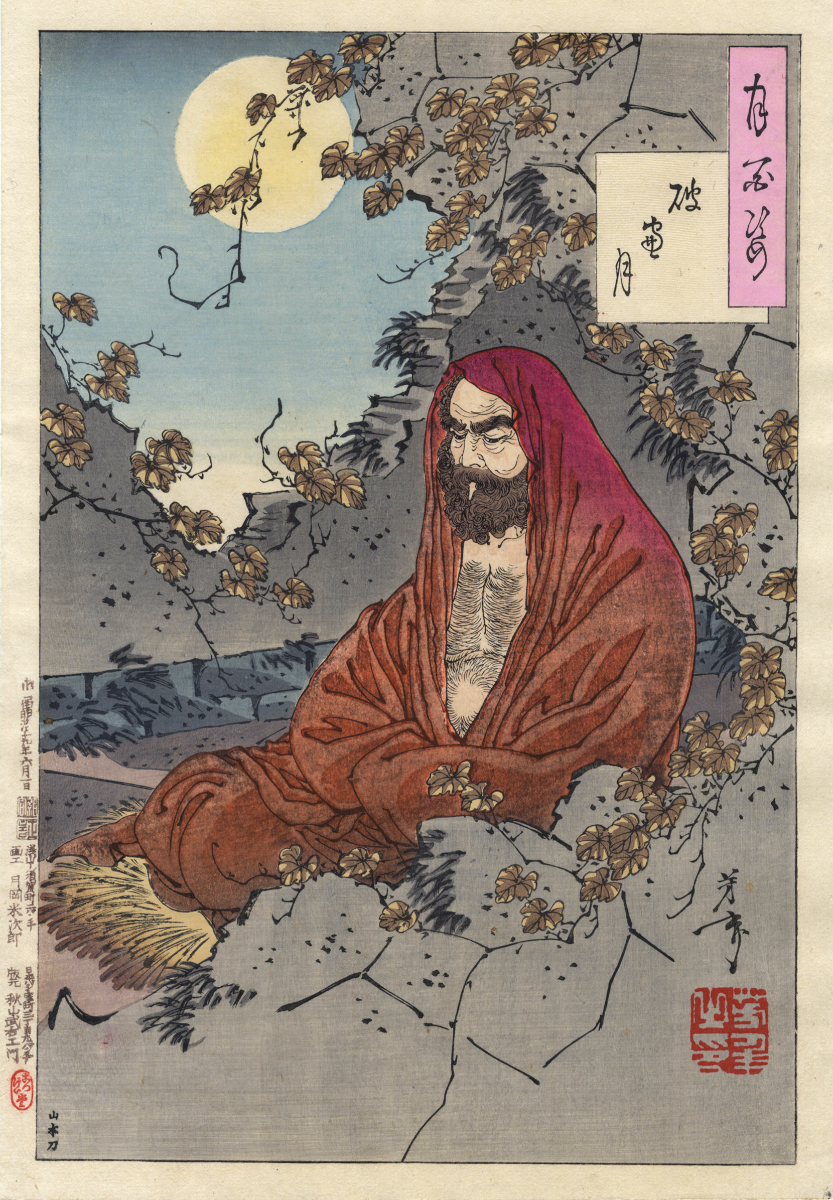Bodhidharma was a semi-legendary Buddhist monk who lived during the 5th or 6th century CE. He is traditionally credited as the transmitter of Chan Buddhism to China, and is regarded as its first Chinese patriarch. He is also popularly regarded as the founder of Shaolin kung fu, an idea popularized in the 20th century, but based on the 17th century Yijin Jing and the Daoist association of daoyin gymnastics with Bodhidharma. His name means “dharma of awakening (bodhi)” in Sanskrit. Tanlin, in the preface to Two Entrances and Four Practices, and Daoxuan, in the Further Biographies of Eminent Monks, mentions a practice of Bodhidharma’s termed “wall-gazing”. Both Tanlin and Daoxuan associate this “wall-gazing” with “quieting [the] mind”: “Those who turn from delusion back to reality, who meditate on walls, the absence of self and other, the oneness of mortal and sage, and who remain unmoved even by scriptures are in complete and unspoken agreement with reason.”
| Alias Bodhidharma |
| Real Names/Alt Names Doruma |
| Characteristics Hero, Martial Artist, Historical Figures, Classical Antiquity, Chinese |
| Creators/Key Contributors Tsukioka Yoshitoshi, ○ |
| First Appearance Historical figure |
| First Publisher ○ |
| Appearance List Literature et. al.:The Record of the Buddhist Monasteries of Luoyang (洛陽伽藍記, 547) by Yang Xuanzhi (楊衒之), The Long Scroll of the Treatise on the Two Entrances and Four Practices, The Record of the Masters and Students of the Laṅka (楞伽師資記), Further Biographies of Eminent Monks (續高僧傳, 7th century), Laṅkāvatāra Sūtra, Shinji Shōbōgenzō, Konjaku Monogatarishū (Tales of Times Now Past: Sixty-Two Stories from a Medieval Japanese Collection, Translated 1979). |
| Sample Read Konjaku Monogatarishū (Tales of Times Now Past: Sixty-Two Stories from a Medieval Japanese Collection, Translated 1979) [Web] |
| Description Bodhidharma was a semi-legendary Buddhist monk who lived during the 5th or 6th century CE. He is traditionally credited as the transmitter of Chan Buddhism to China, and is regarded as its first Chinese patriarch. He is also popularly regarded as the founder of Shaolin kung fu, an idea popularized in the 20th century, but based on the 17th century Yijin Jing and the Daoist association of daoyin gymnastics with Bodhidharma. His name means “dharma of awakening (bodhi)” in Sanskrit. Tanlin, in the preface to Two Entrances and Four Practices, and Daoxuan, in the Further Biographies of Eminent Monks, mentions a practice of Bodhidharma’s termed “wall-gazing”. Both Tanlin and Daoxuan associate this “wall-gazing” with “quieting [the] mind”: “Those who turn from delusion back to reality, who meditate on walls, the absence of self and other, the oneness of mortal and sage, and who remain unmoved even by scriptures are in complete and unspoken agreement with reason.” |
| Source Bodhidharma – Wikipedia |

